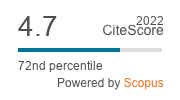Aflatoxin contamination of crops is frequent in warm regions across the globe, including large areas in sub-Saharan Africa. Crop contamination with these dangerous toxins transcends health, food security, and trade sectors. It cuts across the value chain, affecting farmers, traders, markets, and finally consumers. Diverse fungi within Aspergillus section Flavi contaminate crops with aflatoxins. Within these Aspergillus communities, several genotypes are not capable of producing aflatoxins (atoxigenic). Carefully selected atoxigenic genotypes in biological control (biocontrol) formulations efficiently reduce aflatoxin contamination of crops when applied prior to flowering in the field. This safe and environmentally friendly, effective technology was pioneered in the US, where well over a million acres of susceptible crops are treated annually. The technology has been improved for use in sub-Saharan Africa, where efforts are under way to develop biocontrol products, under the trade name Aflasafe, for 11 African nations. The number of participating nations is expected to increase. In parallel, state of the art technology has been developed for large-scale inexpensive manufacture of Aflasafe products under the conditions present in many African nations. Results to date indicate that all Aflasafe products, registered and under experimental use, reduce aflatoxin concentrations in treated crops by >80% in comparison to untreated crops in both field and storage conditions. Benefits of aflatoxin biocontrol technologies are discussed along with potential challenges, including climate change, likely to be faced during the scaling-up of Aflasafe products. Lastly, we respond to several apprehensions expressed in the literature about the use of atoxigenic genotypes in biocontrol formulations. These responses relate to the following apprehensions: sorghum as carrier, distribution costs, aflatoxin-conscious markets, efficacy during drought, post-harvest benefits, risk of allergies and/or aspergillosis, influence of Aflasafe on other mycotoxins and on soil microenvironment, dynamics of Aspergillus genotypes, and recombination between atoxigenic and toxigenic genotypes in natural conditions.
REVIEW ARTICLE
Biological control of aflatoxins in Africa: current status and potential challenges in the face of climate change
R. Bandyopadhyay Related information
1International Institute of Tropical Agriculture (IITA), PMB 5320, Oyo Road, 200001 Ibadan, Nigeria.
*r.
, A. Ortega-Beltran Related information*r.
1International Institute of Tropical Agriculture (IITA), PMB 5320, Oyo Road, 200001 Ibadan, Nigeria.
, A. Akande Related information2IITA, PMB 82, Garki GPO, Kubwa, Abuja, Nigeria.
, C. Mutegi Related information3IITA, ILRI campus, P.O. Box 30772-00100, Nairobi, Kenya.
, J. Atehnkeng Related information4IITA, Chitedze Research Station, Off Mchinji Road, P.O. Box 30258, Lilongwe 3, Malawi.
, L. Kaptoge Related information1International Institute of Tropical Agriculture (IITA), PMB 5320, Oyo Road, 200001 Ibadan, Nigeria.
, A.L. Senghor Related information5La Direction de la Protection des Végétaux (DPV), Km 15, Route de Rufisque, en face Forail, BP 20054, Thiaroye-Dakar, Senegal.
, B.N. Adhikari Related information6USDA-ARS, School of Plant Sciences, University of Arizona, P.O. Box 210036, Tucson, AZ 85721-0036, USA.
, P.J. Cotty Related information6USDA-ARS, School of Plant Sciences, University of Arizona, P.O. Box 210036, Tucson, AZ 85721-0036, USA.
World Mycotoxin Journal: 9
(5)- Pages: 771 - 789

Published Online: November 10, 2016
Abstract
Keywords: atoxigenic, maize, groundnut, Aflasafe, commercialisation
2023 Journal Impact Factor
2.0
source: Journal Impact Factor 2023™ from Clarivate™

Institutional Offers
For institutional orders, please contact [email protected].
Purchase Options
-
P. Battilani and M. Camardo Leggieri
-
F. Xu, R.C. Baker, T.B. Whitaker, H. Luo, Y. Zhao, A. Stevenson, C.J. Boesch and G. Zhang
-
A.O. Aasa, F.F. Fru, O.A. Adelusi, S.A. Oyeyinka and P.B. Njobeh
-
F. Wu
-
V. Ostry
-
V. Ostry
-
R. Bandyopadhyay, A. Ortega-Beltran, A. Akande, C. Mutegi, J. Atehnkeng, L. Kaptoge, A.L. Senghor, B.N. Adhikari and P.J. Cotty
-
A. Logrieco, A. Moretti and M. Solfrizzo
-
G. Schatzmayr and E. Streit
-
B. Grenier and I. Oswald



